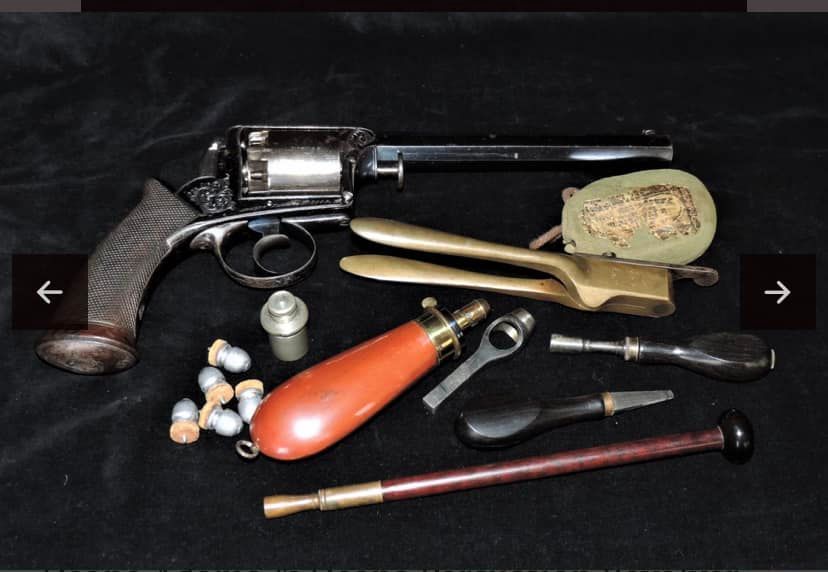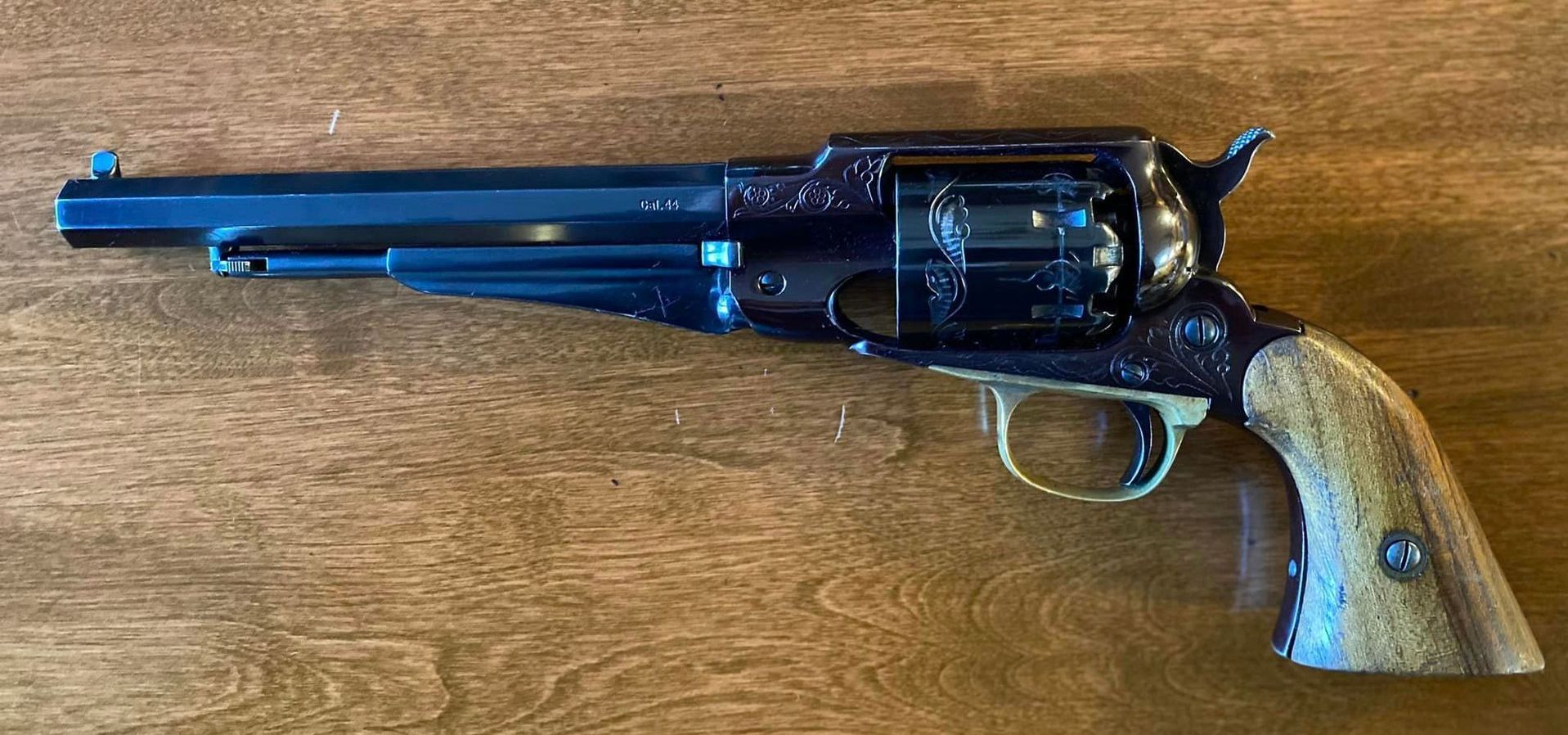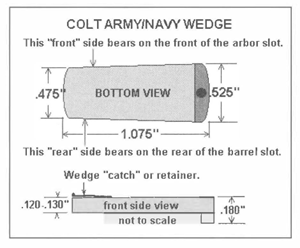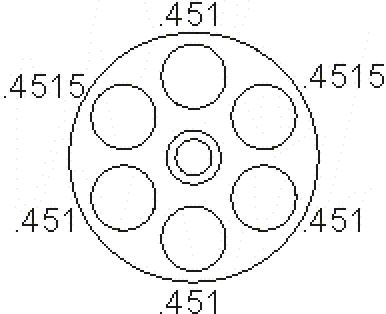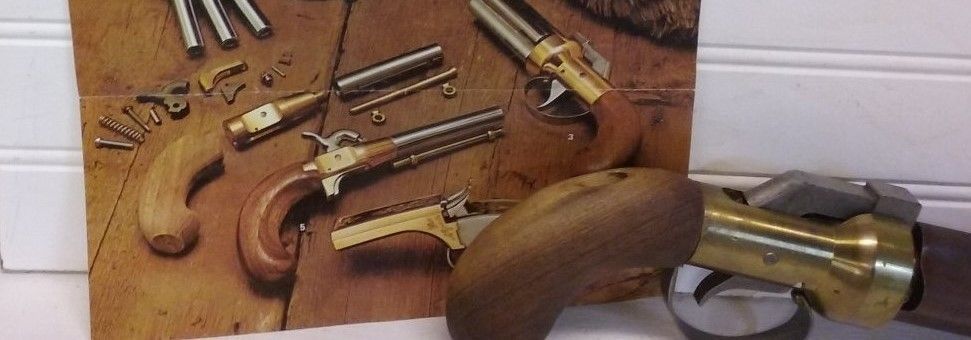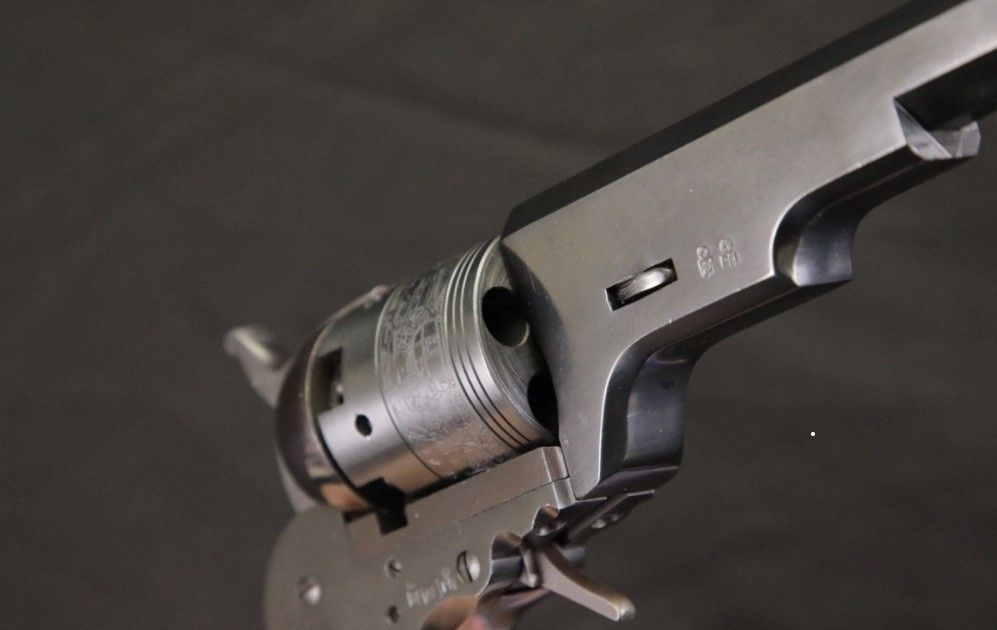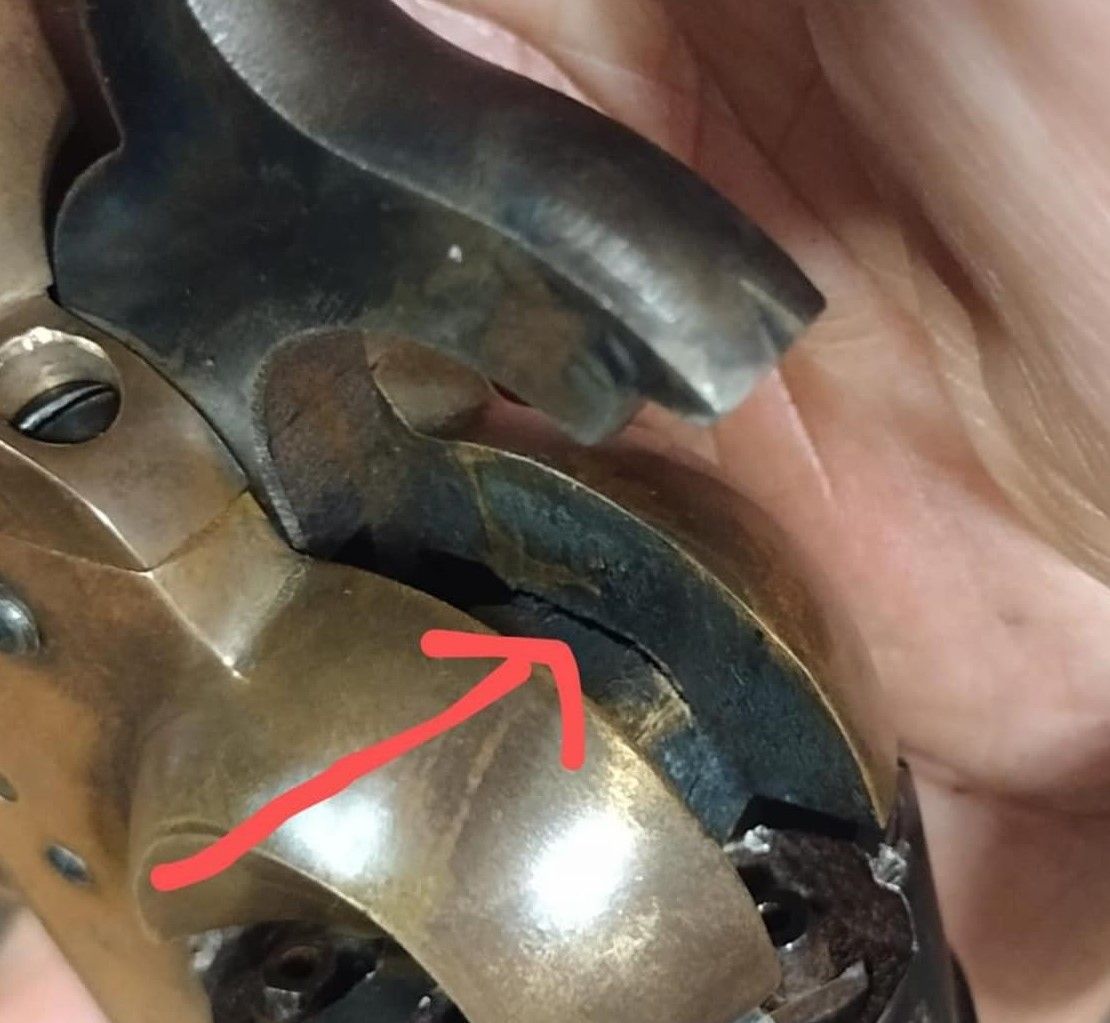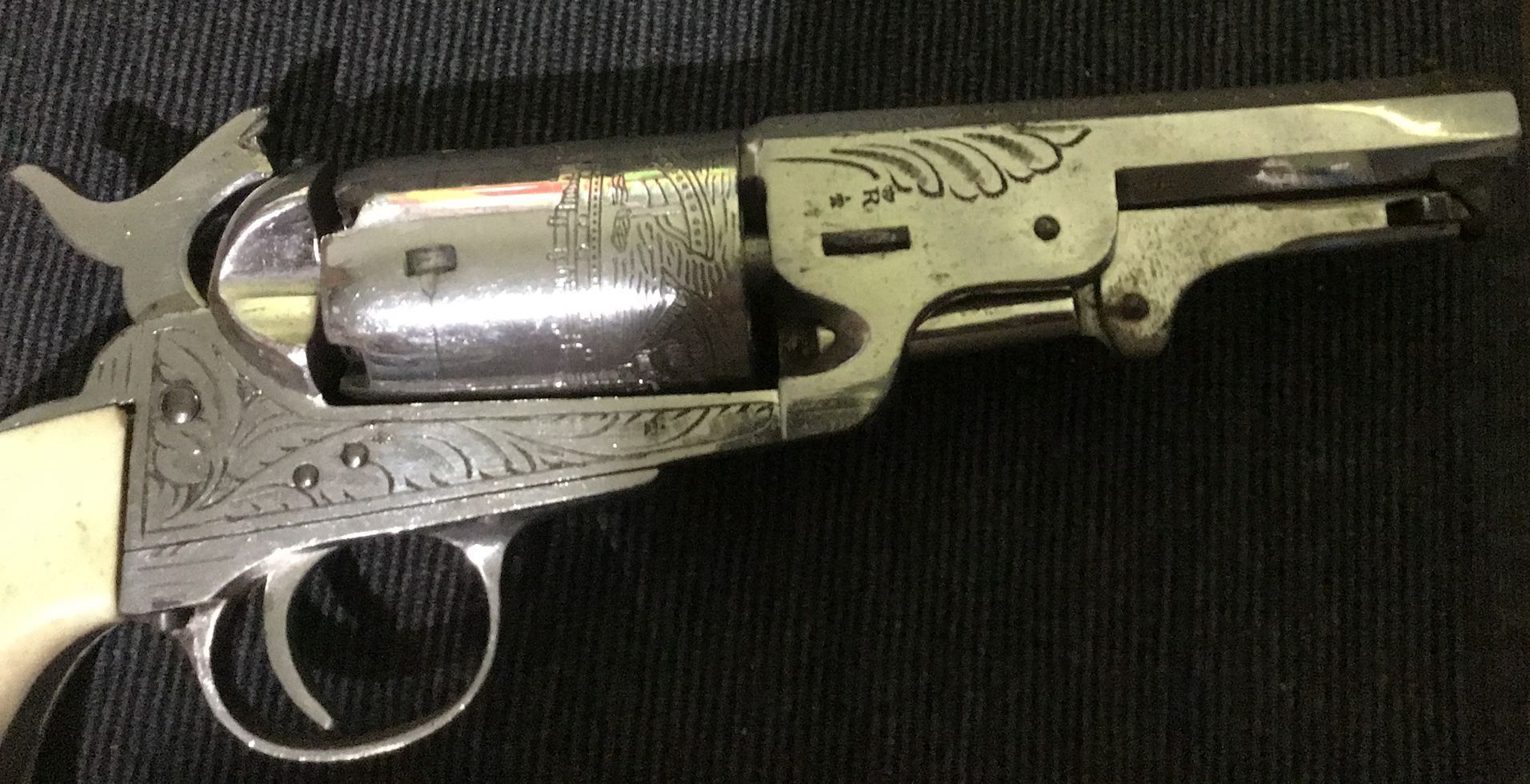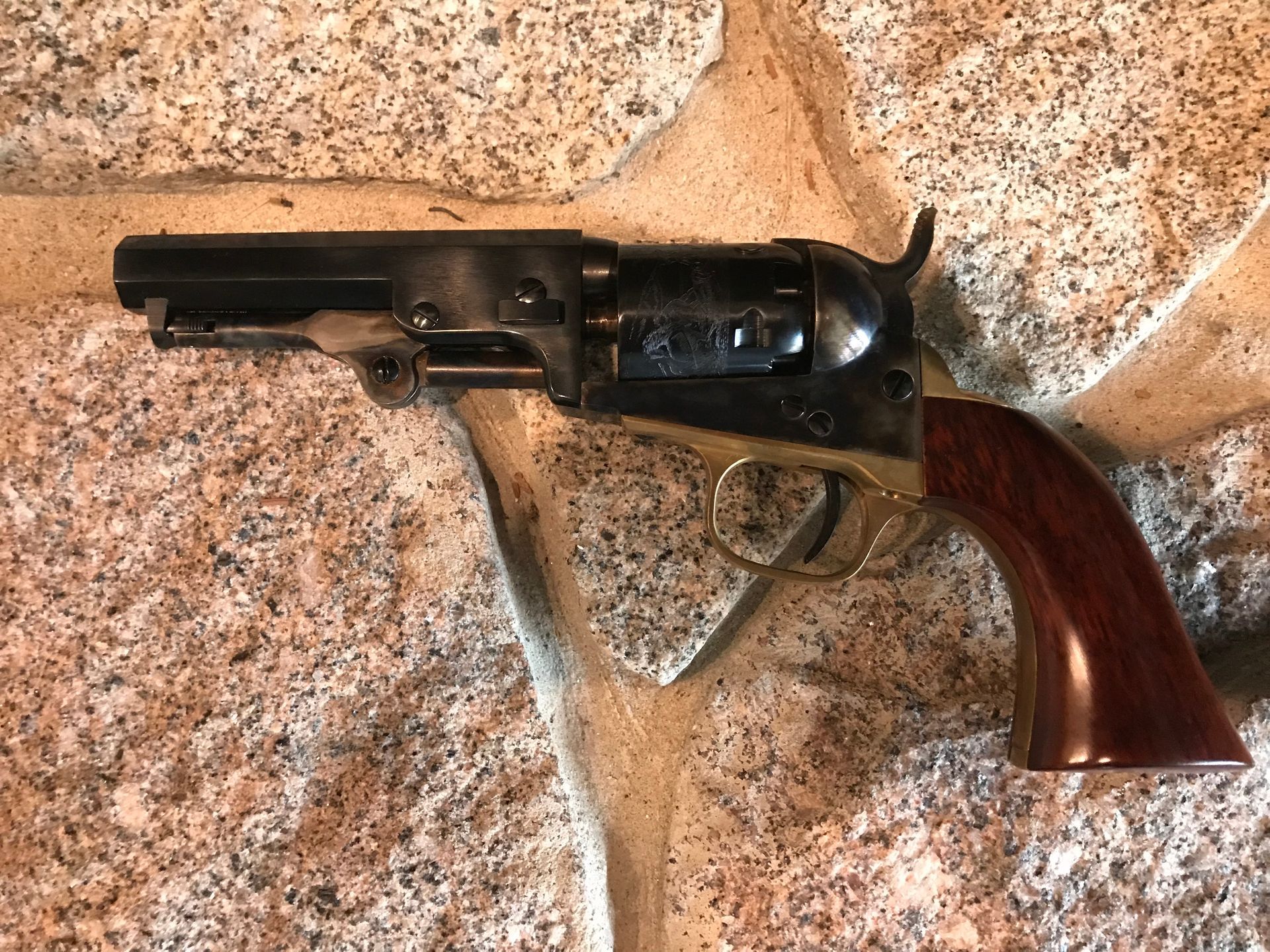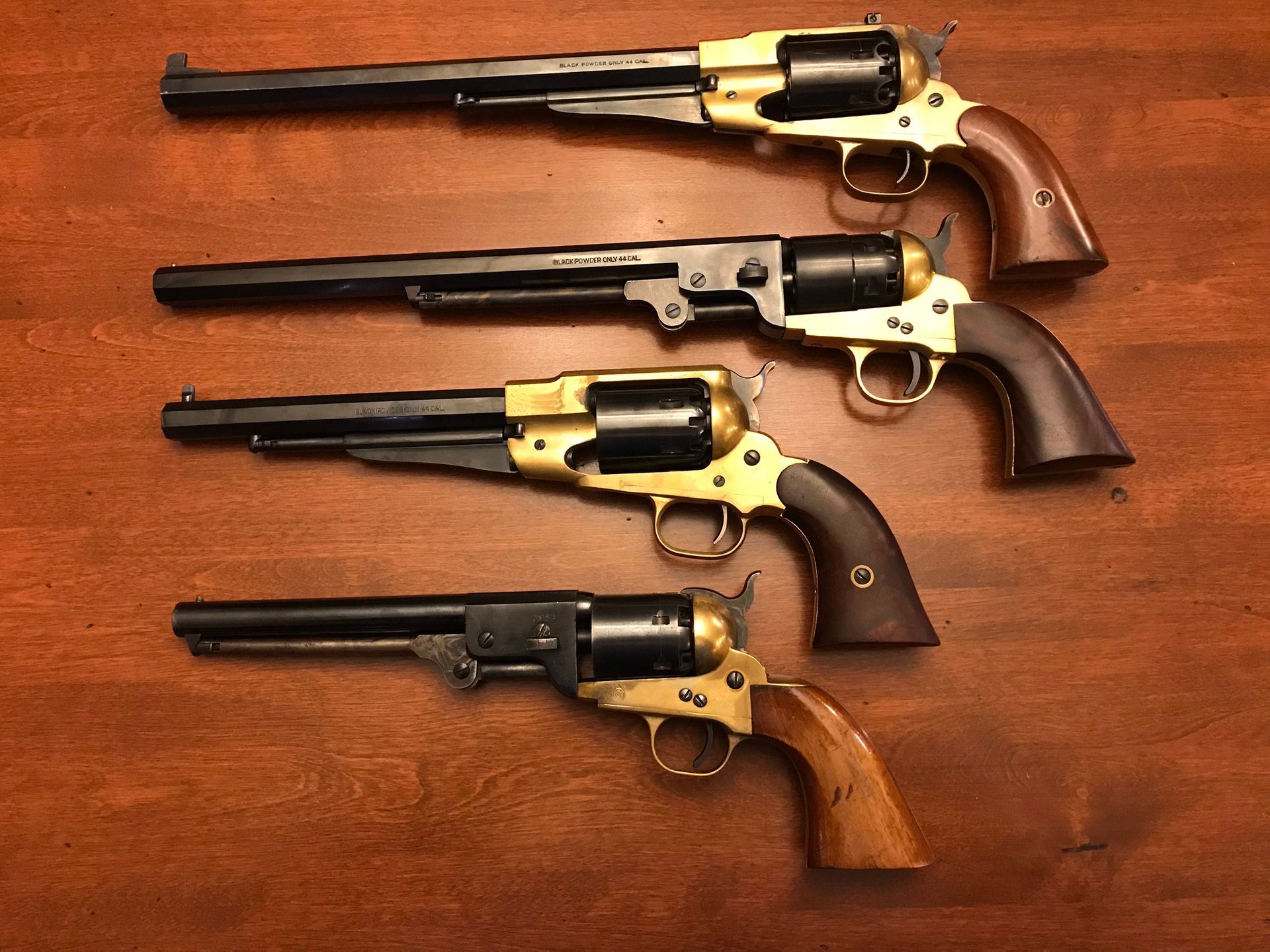Historical Evidence for the Use of Multiple Cylinders in Percussion Revolvers
Historical Use of Spare Cylinders
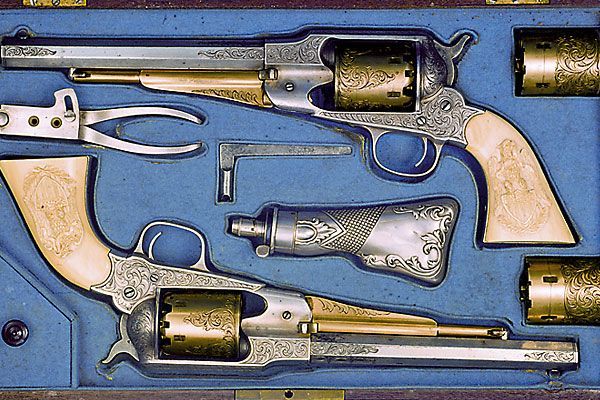
The use of spare cylinders for either the Colt and/or Remington revolvers between 1836 and 1873 was not particularly a standard practice, but there is evidence of their limited use in certain contexts. The use of spare cylinders originated with the Colt Paterson revolvers in the 1830s and 1840s. The Colt Paterson Model No. 5, was a five-shot .36 caliber percussion revolver and was known to come with an extra cylinder or two as seen from cased sets of the period. We also know that Texas Rangers reportedly used spare cylinders for their Paterson Colts during engagements with the Comanches, allowing for quick reloading during battle. We find reference to this in Savage Frontier Volume II: Rangers, Riflemen, and Indian Wars in Texas, 1838-1839 by Stephen Moore. An excerpt reads as follows:
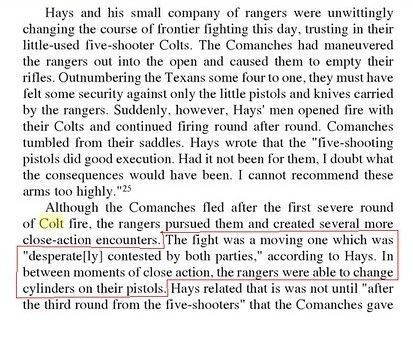
After having done further research a few years ago on the use of spare cylinders with percussion revolvers, I was able to find several more instances where the use of these spare cylinders was mentioned. But we don't necessarily find it in regards to the regularly issued equipment by the military. There is reference to their use sometime around the late 1840’s or early 1850’s in a trial being performed by General William S. Harney with a dozen Dragoon revolvers. Although others indicate that it was Paterson rifles rather than Dragoon revolvers, what I cite indicates Dragoon revolvers and based on the timeline of Haney’s rise to General, it seems that it had to be the late 1840’s to early 1850’s. Production of the Colt Dragoon revovler began in 1847, so the timeline also indicates that it was Dragoon revolvers.
In this excerpt from "Ten Years in the Saddle", The Memoir of William Woods Averell 1851-1862 we find the reference to the spare cylinders. Averell was a cavalryman and attended the military academy, where his memoirs begin, and then extend on into into the Civil War. It seems that on or about 1857, Averell recalls this account while he was at Fort Leavenworth by the commander of the fort, as stated in the second paragraph of page 88 of the text. He refers to Harney as “General Harney". Harney was not promoted to general until Harney had fought with distinction at the Battle of Cerro Gordo, after which he received a promotion to brevete brigadere general. He returned to cavalry command as a general during the Battle of Contreras in August of 1847. (John Eisenhower, So Far from God: the U.S. War with Mexico, 1846–1848 (Random House Publishers 1989) p. 256n)
William Woods writes: "When the old Dragoon revolver was first made, a dozen of them were sent to his [Harney] regiment for trial. A dozen men were selected to carry and use them. When the men were assembled to receive them at the Colonel's headquarters, he [Harney] said to them mildly, "my men, I have selected you on account of your intelligence and steadiness to test this new arm," and then went on to explain to them its action and use, showing that each pistol had TWO (emphasis added) cylinders, both of which were kept loaded so that when the one in the pistol had been exhausted it could be removed and replaced by the extra one in a moment." So we know that spare cylinders were issued to at least this group of 12 soldiers. It then becomes somewhat obvious that this trial was just that, a trial, because we find no other reference to these spare cylinders being issued through out the military before or during the Civil War. Yet, even though this was only a “trial” spare cylinders may not have been the norm, but were carried, even for a brief period.
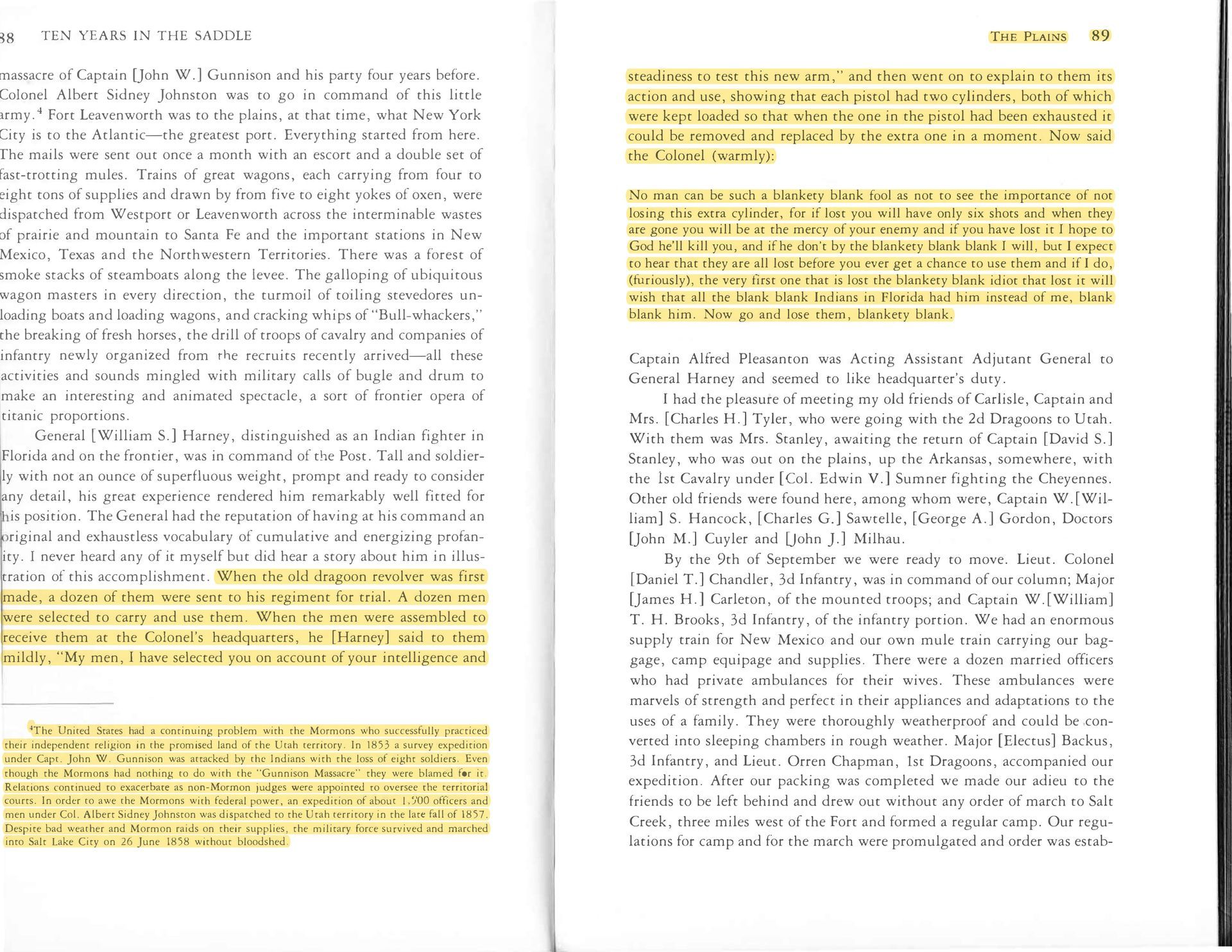
Another reference I was able to find was relating to the guerillas of Missouri, and more especially to the Bushwackers like Bloody Bill Anderson. I cite "KILLED AND CAPTURED: MISSOURI CIVIL WAR GUERRILLAS IN MYTH AND REALITY" by Matthew M. Lesnett which states:
"Another necessity to the image of the guerrilla focused mostly around the guerrilla shirt. The guerrilla shirt was not a formal uniform, but as the war progressed it became the default piece of clothing that nearly all guerrillas wore. These shirts were handmade —typically by the bushwhacker’s sweetheart, mother, or sister—and baggy in fit. They were low-cut around the neck and often had several deep pockets designed to hold "extra revolver cylinders" and other everyday wares. Whoever made the shirt often embroidered it with flowers and other complicated stitching’s, adding to its beauty. No two shirts were alike, as they were often made of different types of cloth, different colors, similar but ultimately different cuts and sizes, and different stitching and embroidery.
This is further cited by Joseph M. Beilein, “The Guerrilla Shirt: A Labor of Love and the Style of Rebellion in Civil War Missouri,” in Civil War History, vol. 58, no. 2 (2012), 158-159. Here we read of another indication of the carrying of spare cylinders by "Bloody" Bill Anderson.
In "Bloody Bill Anderson: The Short, Savage Life of a Civil War Guerrilla By Albert E. Caste, we also read:
"The bushwackers did not carry so many of these [revolvers] out of vain bravado but for the very practical reason that they wanted to be able to keep firing rapidly without stopping to reload, a tricky and risky business on horseback in the midst of a fight, even if you had, as they did, "preloaded spare cylinders", in those large shirt pockets." But this is a minor point in an otherwise excellent article.
So we have seen several references to the carrying of spare cylinders with the military trial and with the guerillas of the Civil War. The military may not have issued them as a matter of course, and it may not have been the norm, but we have read that they were supposedly carried by the men referred to.
We are also aware of the fact that Remington did advertise the sale of extra cylinders for some of their revolvers and have seen cased sets with spare cylinders, especially after their conversion cylinders became available, as seen in the heading photo above. Colt also sold revolvers with spare cylinders, particularly in cased sets, but this was not typical for standard-issue firearms. (Perplexity, 2023)
For irrefutable documentation of the practice, one can refer to a number of studies by respected firearms historians, R.L. Wilson, Roy Marcot and R. Bruce McDowell, who not only write about it, but also show numerous photos of revolvers produced with spare cylinders.
References:
Savage Frontier Volume II: Rangers, Riflemen, and Indian Wars in Texas, 1838-1839 by Stephen Moore.
Ten Years in the Saddle", The Memoir of William Woods Averell 1851-1862 by Edward K. Eckert and Nicholas J. Amato, Jan 1, 1978
(John Eisenhower, So Far from God: the U.S. War with Mexico, 1846–1848 (Random House Publishers 1989) p. 256n)
"KILLED AND CAPTURED: MISSOURI CIVIL WAR GUERRILLAS IN MYTH AND REALITY" by Matthew M. Lesnett
Joseph M. Beilein, “The Guerrilla Shirt: A Labor of Love and the Style of Rebellion in Civil War Missouri,” in Civil War History, vol. 58, no. 2 (2012), 158-159.
Bloody Bill Anderson: The Short, Savage Life of a Civil War Guerrilla By Albert E. Caste
